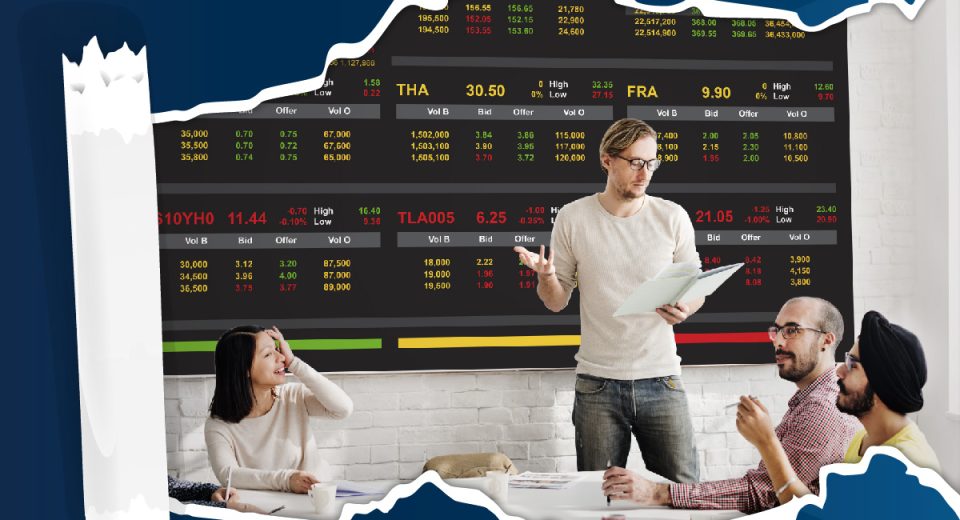Momentum Trading for Beginners
At first glance, the global financial markets seem highly volatile. The prices may appear to be continuously moving in different directions, with traders going long or short. The truth is that markets have some inertia or resistance to change. Once the momentum has picked up in one direction, markets continue to track that direction, albeit with minor ups and downs. This continues till something meaningful forces prices to reverse their direction.
Momentum trading is based on identifying the direction in which markets are trending and entering a position just when it begins to pick up steam. The aim is to maximise gains by opening a position early in the trend and exiting it just before a reversal. This means you would require tools to correctly identify the direction of the momentum and signs of a reversal.
Momentum Trading Process and Risks Involved
Momentum trading does not involve any fundamental analysis and considers only price movements. It involves identifying a trend, checking its strength, and opening a position to take advantage of the continuation. The idea is to close the position when the trend starts losing its momentum (strength), and there are signs of a reversal.
Momentum trading can be used if:
- The price of an asset is moving either up or down.
- The trading volume is high (liquidity), which is important because you need to enter and exit positions quickly.
If the asset price is in an uptrend and the trading volume is high, it’s time to go long. Conversely, if the price is falling and the trading volume is high, it’s time to go short.
The biggest risk in momentum trading is missing the start of a new trend, entering too late, exiting too early, and forgoing profits. Markets can also suddenly become highly volatile, requiring risk management techniques like stopping loss and taking profit.
Technical Indicators for Momentum Trading
Momentum refers to the rate of increase or decrease in prices and is a useful indicator of strength or weakness in the market. A good way to start momentum trading is by identifying assets within 10% of their 52-week highs. You can also compare the asset’s current price with a range or average over a specific period.
Some of the popular technical indicators that help identify a trend to determine entry and exit points are:
- Relative Strength Index (RSI)
RSI is by far the most popular indicator used for momentum trading. It provides buy and sell signals, is plotted below the chart and moves from 0 to 100. Any value above 70 indicates the asset being overbought and anything lower than 30 is considered oversold. You can base your strategies on the idea that retracements between overbought and oversold price levels present clear trends. But while using this indicator, the overbought and oversold signals do not mean that the trend is going to reverse. So, experienced traders use the RSI indicator along with other indicators. Some traders also view the RSI value of 50 as a support or resistance benchmark.
- Moving Average Convergence/Divergence (MACD)
Moving averages are used to spot emerging trends while filtering out market noise (random price fluctuations). It helps you check whether the market is range-bound. While the MACD is also a momentum oscillator like RSI, it does not reveal overbought and oversold conditions.The MACD line is typically calculated by the difference between the 26-period exponential moving average (EMA) and the 12-period EMA. The signal line is a 9-period EMA. The crossover of the two lines provides the trading signals. When the MACD line crosses above zero, bulls are said to control the market. When the line crosses below zero, the market is said to be bearish.
- Stochastic Oscillator
The indicator is comprised of two lines. The first line oscillates between 0 and 100. A reading of over 80 indicates an overbought position and a reading below 20 indicates an oversold position. The second line is the signal line. When the first line crosses this, it is seen as a sign of a reversal (change in the direction of the ongoing trend).
- Average Directional Index (ADX)
The Average Directional Index (ADX) comprises a set of two indicators. The first, known as ADX, is used for measuring strength in the market. The second, known as Directional Indicator (DI), is used to check the direction.If the ADX is above 25, the trend is considered strong, while the ADX being below 20 indicates weakness. If the +DI (positive directional indicator) crosses above the -DI (negative directional indicator), while the ADX is above 25, it is considered an ideal buy signal. Similarly, if the -DI crosses above the +DI, and the ADX is above 25, it is a signal to go short.Relying on one indicator, especially a momentum indicator, is a rookie mistake. Even if your strategy calls for momentum trading, you can use a combination of momentum indicators, trend indicators and pureplay volume indicators to confirm the strength in the market and the buy and sell signals. For instance, RSI is often combined with Bollinger Bands, a popular trend indicator, to understand the strength and direction of the market.
To Sum Up
- Momentum trading is based on the volume and volatility in a trending market.
- Traders focus on the strength in price movements, rather than the fundamentals of the asset being traded.
- While RSI, MACD, Stochastic Oscillator and ADX are popular momentum indicators, it’s good to know their limitations.
- Risk management is key as momentum trading involves quick decision making.
- A combination of two or more indicators must be used to confirm the buy and sell signals.
Disclaimer:
All data, information, and materials are published and provided “as is” solely for informational purposes only and are not intended nor should be considered, in any way, as investment advice, recommendations, and/or suggestions for performing any actions with financial instruments. The information and opinions presented do not take into account any particular individual’s investment objectives, financial situation, or needs, and hence do not constitute as advice or a recommendation with respect to any investment product. All investors should seek advice from certified financial advisors based on their unique situation before making any investment decisions in accordance to their personal risk appetite. Blackwell Global endeavours to ensure that the information provided is complete and correct but make no representation as to the actuality, accuracy or completeness of the information. Information, data, and opinions may change without notice and Blackwell Global is not obliged to update on the changes. The opinions and views expressed are solely those of the authors and analysts and do not necessarily represent that of Blackwell Global or its management, shareholders, and affiliates. Any projections or views of the market provided may not prove to be accurate. Past performance is not necessarily an indicative of future performance. Blackwell Global assumes no liability for any loss arising directly or indirectly from use of or reliance on such information herein contained. Reproduction of this information, in whole or in part, is not permitted.




